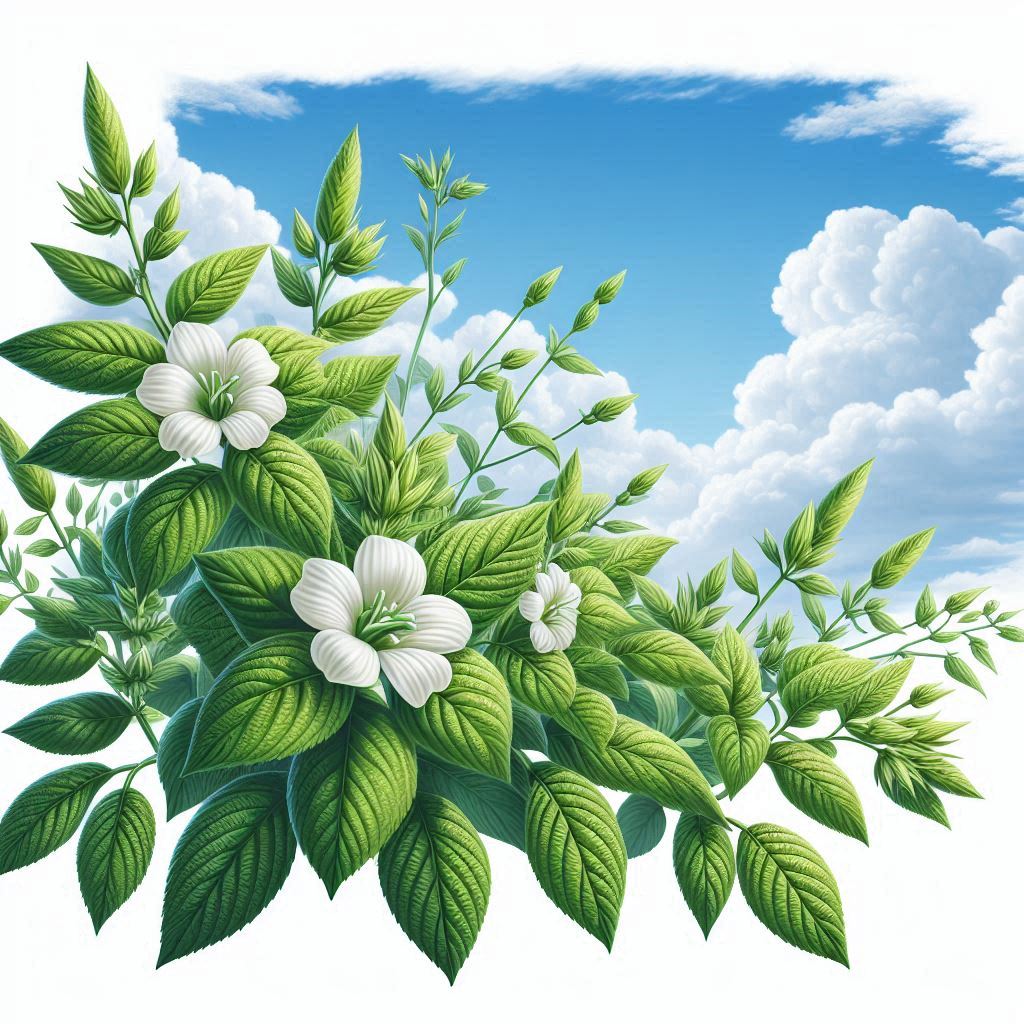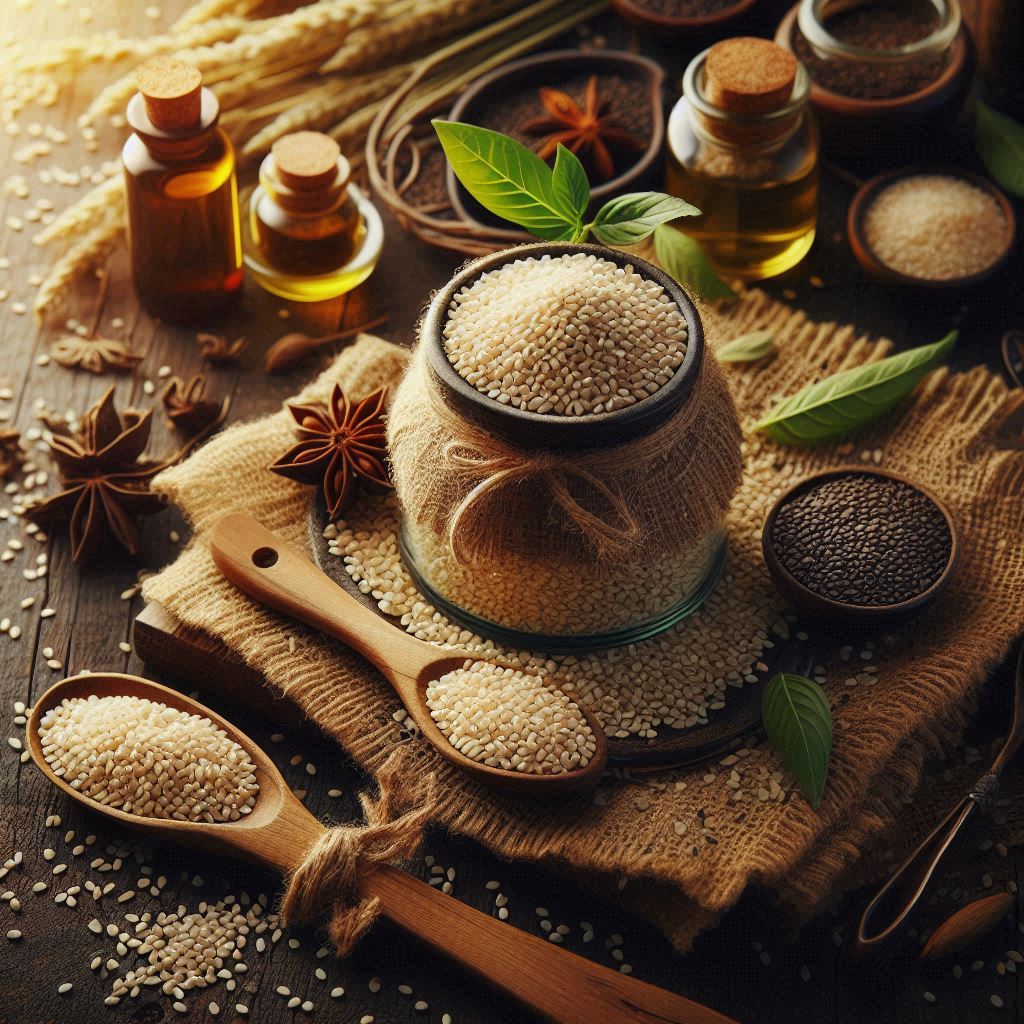Sesame seeds are a staple in kitchens around the world, known for their nutty flavor and crunchy texture. But have you ever wondered where these tiny seeds come from? Meet the sesame seed plant (Sesamum indicum), a fascinating and ancient crop that has been cultivated for thousands of years. In this comprehensive guide, we’ll explore everything you need to know about the sesame seed plant—from its history and cultivation to its health benefits and culinary uses. Whether you’re a gardener, a foodie, or just curious, this article will give you a deeper appreciation for this remarkable plant.

What is a Sesame Seed Plant?
The sesame seed plant is an annual flowering plant that belongs to the Pedaliaceae family. It grows in tropical and subtropical regions and is primarily cultivated for its edible seeds. The plant can reach heights of up to 6 feet and produces delicate white or pink flowers. After pollination, the flowers develop into seed pods, which contain the tiny, nutrient-rich sesame seeds we know and love.
A Brief History of Sesame Seed Plants
Sesame is one of the oldest oilseed crops in the world, with a history dating back over 5,000 years. It is believed to have originated in Africa or India and was highly valued in ancient civilizations like Egypt, Babylon, and Assyria. Sesame seeds were even used as a form of currency in some cultures! Today, sesame is grown in many parts of the world, including India, China, Sudan, and Myanmar.
Why Grow Sesame Seed Plants?

- Nutrient-Rich Seeds: Sesame seeds are packed with essential nutrients like calcium, iron, magnesium, and healthy fats.
- Versatility: The seeds can be used in cooking, baking, and even as a garnish.
- Drought Tolerance: Sesame plants are hardy and can thrive in hot, dry conditions.
- Pollinator-Friendly: The flowers attract bees and other pollinators, supporting local ecosystems.
- Cultural Significance: Growing sesame connects you to a rich agricultural tradition.
How to Grow Sesame Seed Plants
Growing sesame seed plants is relatively easy, especially in warm climates. Here’s a step-by-step guide to help you get started:
1. Climate and Soil Requirements
- Climate: Sesame plants thrive in warm, tropical, or subtropical climates. They need temperatures between 70°F and 90°F to grow well.
- Soil: Well-draining, sandy loam soil with a pH of 5.5 to 8.0 is ideal. Avoid waterlogged or heavy clay soils.
2. Planting
- When to Plant: Sow seeds directly in the ground after the last frost, when the soil has warmed up.
- Spacing: Plant seeds about 1 inch deep and 12 to 18 inches apart to allow room for growth.
3. Watering
- Sesame plants are drought-tolerant but need regular watering during the germination and early growth stages. Once established, they require minimal watering.
4. Fertilization
- Use a balanced fertilizer at planting time to encourage healthy growth. Avoid over-fertilizing, as this can lead to excessive foliage and fewer seeds.
5. Pest and Disease Management
- Sesame plants are relatively pest-resistant, but watch out for aphids, whiteflies, and fungal diseases. Use organic pest control methods like neem oil if needed.
6. Harvesting
- Sesame plants are ready to harvest when the seed pods turn brown and begin to split open. Cut the plants at the base and hang them upside down to dry. Once dry, shake the pods to release the seeds.
Health Benefits of Sesame Seeds
Sesame seeds are not just delicious—they’re also incredibly nutritious. Here are some of their key health benefits:
- Rich in Nutrients: Sesame seeds are an excellent source of calcium, iron, magnesium, and zinc.
- Heart Health: The seeds contain healthy fats and antioxidants that support cardiovascular health.
- Bone Health: High calcium content makes sesame seeds great for maintaining strong bones.
- Digestive Health: The fiber in sesame seeds promotes healthy digestion.
- Antioxidant Properties: Sesame seeds contain lignans and phytosterols, which have anti-inflammatory and antioxidant effects.
Culinary Uses of Sesame Seeds
Sesame seeds are a versatile ingredient in the kitchen. Here are some popular ways to use them:
- Toasted Sesame Seeds: Sprinkle toasted seeds on salads, stir-fries, or baked goods for added crunch and flavor.
- Tahini: This creamy paste made from ground sesame seeds is a key ingredient in hummus and salad dressings.
- Sesame Oil: Used in Asian cooking, sesame oil adds a rich, nutty flavor to dishes.
- Baking: Add sesame seeds to bread, muffins, or cookies for a nutritious boost.
- Garnishes: Use sesame seeds to garnish sushi, noodles, or roasted vegetables.
FAQs About Sesame Seed Plants
1. How long does it take for sesame plants to grow?
Sesame plants typically take 90 to 120 days to mature and produce seeds.
2. Can I grow sesame plants in containers?
Yes, sesame plants can be grown in containers as long as they have enough space and well-draining soil.
3. Are sesame plants drought-tolerant?
Yes, sesame plants are highly drought-tolerant and can thrive in hot, dry conditions.
4. What are the best companion plants for sesame?
Sesame grows well with other warm-season crops like beans, corn, and cucumbers.
5. How do I store sesame seeds?
Store sesame seeds in an airtight container in a cool, dark place. They can last for several months when stored properly.
6. Are sesame seeds gluten-free?
Yes, sesame seeds are naturally gluten-free and safe for people with gluten intolerance or celiac disease.
7. Can I grow sesame plants in cold climates?
Sesame plants prefer warm climates, but they can be grown in colder regions as annuals if started indoors and transplanted after the last frost.
8. What are the different types of sesame seeds?
The most common types are white, black, and brown sesame seeds. Each has a slightly different flavor and nutritional profile.
Where to Buy Sesame Seed Plants and Seeds
If you’re interested in growing sesame seed plants, here are some great places to start:
- Local Nurseries: Check with your nearest nursery for sesame seeds or seedlings.
- Online Retailers: Websites like Amazon, Etsy, and specialized seed shops offer sesame seeds for planting.
- Garden Centers: Large garden centers often carry sesame seeds, especially in the spring and summer.
Conclusion
The sesame seed plant is a true marvel of nature, offering not only delicious and nutritious seeds but also a fascinating history and easy cultivation process. Whether you’re growing it in your garden or enjoying its seeds in your favorite dishes, this plant is sure to bring joy and health to your life.
By following the tips and insights in this guide, you’ll be well on your way to growing and enjoying your own sesame seed plants. So why not give it a try? Plant some sesame seeds today and experience the magic of this ancient crop for yourself!
